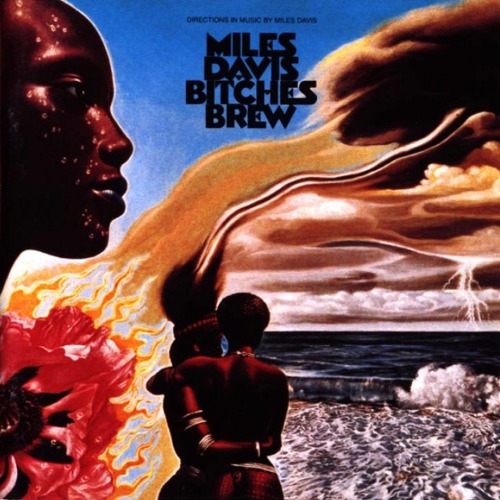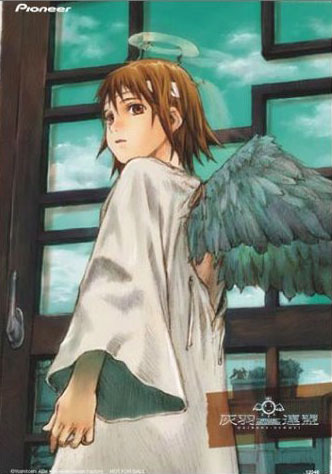
tracklisting
o1. pharaohsdance
o2. bitchesbrew
o3. spanishkey
o4. johnmclaughlin
o5. milesrunsthevoodoodown
o6.sanctuary
When it comes to Black music, I find the most interesting to be the sort with extraterrestrial or supernatural implications and themes. Whether Jimi Hendrix is singing the blues about how he's a "Voodoo Chile" or Sun Ra is eerily whispering (with an echoing chorus) that "There Are Other Worlds (They Have Not Told You Of)," the psychedelic and metaphysical soundscapes involve me the most. Such is the sentiment when I listen to Miles Davis's most controversial and compelling album.
Miles Davis always has been considered one of the greatest within the jazz community, his name often uttered in the same breath as John Coltrane, Herbie Hancock and Chick Corea. Not only had he managed to posit himself in the forefront of nearly every major movement in jazz, yet in a number of cases, Miles Davis became the face of various movements with his cool persona. Cool Jazz, a slick, jazz-nocturne style genre was spearheaded by one of the first of Miles Davis's remarkable releases aptly titled, "Birth of the Cool". With "Birth of the Cool," Miles' prolific career was birthed, he becoming jazz in its various manifestations, perhaps fully recognized with the release of "Bitches Brew" decades later.
"Bitches Brew" - the title evoking the dark imagery of Shakespearean witches brewing malignity with their boiling kettle. The various song titles even hinting at the blackness of the album, beginning with "Pharoah's Dance". The opening track dances around the sound of congas - a frantic collage of horns and piano riffs played by Jazz kings, swooping in and out of the foreground. At times, "Pharoah's Dance" sounds like a disjointed, fractured and abstract reworking of a Fela Kuti song with his "Queens'" chants replaced by Miles Davis's trumpet. The titular track however sets the tone for the entire album - an eerie trumpet solo by Miles Davis weaves in-between the heavy piano riffs that come close to deep-groove of funk, yet never reaching that level of levity, brooding just low enough to possess the listener however. "Spanish Key" and "John McLaughlin" offer slight reprieve from the darker opening tracks, but if one were to go by song length alone, the two tracks combined don't even equal the aural journey that was Bitches Brew. The latter of the tracks is the shortest on the album and as a result, "John McLaughlin" is the tightest and grooviest of all the tracks, blues notes echoing throughout the entirety of the brief track.
"Miles Runs the Voodoo Down" is one of the highlights of the album, standing off with "Bitches Brew"as my favorite song. The track resembles Jimi Hendrix's "Voodoo Chile" in the beginning, attempting to touch on the sonic blues with a loose-jazz influence. But as "Miles Runs the Voodoo Down", the title becomes more and more fitting, the song becoming more and more chaotic - Miles Davis' masterful trumpet playing being the only thing holding the song together. For a brief moment, the track boils down, the pace slows to a walk instead of a run and the rhythm is relaxed apart from Miles Davis' increasingly energetic solo. It's as though Miles Davis makes a frantic effort to shed his reputation as a "cool" jazz musician - his horn shouting aggressively and vigorously near the end of the song, nearing utter cacophony in his effort to "...Run the Voodoo Down".
"Sanctuary" sounds as the name implies [within the context of the album, mind you]. The soothing conclusion to "Bitches Brew" revealing a similar vibe to Herbie Hancock's magnum opus "Maiden Voyage". The last track, not even making the eleven minute mark, drifts along. Occasionally, the aggressive trumpet solos of Miles Davis push the track along, rousing the listener from their peaceful drifting, only for the vibe to calm again. The album as a whole tells a story that is best recognized upon repeated listens. Initially, the album was met with criticism for its loose, aggressive and disjointed sound. Only in later years was the album's relevance acknowledged and lauded.











